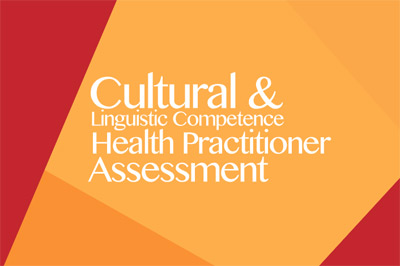LUPUS IS NOT A ZEBRA
This video assists healthcare professionals to recognize potential lupus symptoms and make appropriate referrals to rheumatologists.
[music]
On-screen text
When you hear hoofbeats you think horses, not zebras. We have all heard this expression before. Many times, lupus is a zebra. “With a worldwide prevalence as low as 21 out of 100,000, you may think lupus is likely not the reason the woman or adolescent in your exam room has a fever and fatigue.” However, when you’re treating a woman of color in her childbearing years, lupus is not a zebra. It’s a horse.
Lupus afflicts up to 400 out of 100,000 young African American women, much higher than White women. Lupus is also more common in Hispanic/Latino, Asian, and American Indian/Alaskan Native women. And it impacts African American and Hispanic/Latino women at young ages and more severely than white women. Racial and ethnic minorities have mortality rates at least three times as high as White individuals. And while it is more common among women, men get lupus too. Complicating matters even more, diagnosis may take two or more years after visits to three or more healthcare providers.
Why? Lupus can mimic conditions like viral syndromes, malignancies, allergic reactions, and stress. Non-specific symptoms include fatigue, achiness, and stiffness, low-grade fever, swollen lymph nodes, rashes. Symptoms may develop slowly or come on suddenly and delaying diagnosis can be devastating, possibly prompting organ failure and premature death. Diagnosed early, a person with lupus has a much better chance for a full life with a manageable, chronic disease.
By recognizing who is most at risk for lupus, detecting potential symptoms, and making appropriate referrals to rheumatology health professionals, you can help improve health prospects for people with undiagnosed lupus. Remember, factors like gender, race, ethnicity, and age impact the chances that your symptomatic patient has lupus. In which case, lupus is not a zebra. It’s a horse. Know when to suspect lupus. Know when to refer.
For more information, including free lupus CME, please visit thelupusinitiative.org, rheumatology.org.
[00:02:39] [END OF AUDIO]
[música]
Texto en pantalla
Cuando oyes cascos, piensas en caballos, no en cebras. Todos hemos escuchado esa expresión. Muchas veces, el lupus es una cebra. “Con una prevalencia mundial tan baja de 21 por cada 100.000; usted podría pensar que el lupus no sea la razón por la que la mujer o la adolescente en su consultorio tiene fiebre y fatiga”. Sin embargo, cuando la persona que usted está tratando es una mujer de color en edad fértil, el lupus no es una cebra, es un caballo.
El lupus afecta hasta 400 de cada 100,000 mujeres jóvenes afroamericanas, mucho más que las mujeres blancas. El lupus también es más común en mujeres hispanas/latinas, asiáticas e indias americanas/nativas de Alaska. Y afecta a las mujeres afroamericanas e hispanas/latinas a edades tempranas y más severamente que a las mujeres blancas. Las minorías raciales y étnicas tienen tasas de mortalidad al menos tres veces más altas que las de los blancos. Y aunque es más común entre las mujeres, los hombres también contraen lupus. Para complicar aún más las cosas, el diagnóstico puede tardar dos o más años después de visitar a tres o más proveedores de atención médica.
¿Por qué? El lupus puede imitar condiciones como síndromes virales, neoplasias malignas, reacciones alérgicas y estrés. Los síntomas inespecíficos incluyen: fatiga, dolor y rigidez, febrícula, inflamación de los ganglios linfáticos y erupciones cutáneas. Los síntomas se pueden desarrollar lentamente o aparecer de repente, y retrasar el diagnóstico puede ser devastador, posiblemente provocando una falla orgánica y una muerte prematura. Con un diagnóstico temprano, una persona con lupus tiene muchas más posibilidades de tener una vida plena con una enfermedad crónica manejable.
Al reconocer quién está en mayor riesgo de contraer lupus, detectar los síntomas potenciales y hacer las derivaciones adecuadas a los profesionales de la salud en reumatología, puede ayudar a mejorar las perspectivas de salud de las personas con lupus no diagnosticado. Recuerde, factores como el género, la raza, la etnia y la edad influyen en las posibilidades de que su paciente sintomático tenga lupus. En cuyo caso, el lupus no es una cebra. Es un caballo. Sepa cuándo sospechar de lupus. Sepa cuándo derivar.
Para obtener más información, incluido el Lupus CME gratuito, visite: lupusinitiative.org, rheumatology.org.
[00:02:39] [FIN DEL OF AUDIO]
The following is a list of additional resources for healthcare providers.
American Indian and Alaska Native (AI/AN) Resources
Our Illuminating Lupus awareness video was developed to help non-rheumatology providers serving AI/AN communities recognize lupus signs and symptoms.
Learning Objectives
After this presentation, learners should:
- Recognize the signs and symptoms of lupus
- Know when to effectively refer a suspected lupus case to a rheumatologist
- Know how to initiate a work-up for lupus
- Have increased knowledge about lupus epidemiology, health disparities and disease characteristics in the AI/AN community and other racial/ethnic populations
The Role of Perspectives in Lupus Care
 This four-part video series examines how unconscious biases in the thinking of both patients and physicians impacts the diagnosis and treatment of lupus. Essays, quizzes and additional resources are included.
This four-part video series examines how unconscious biases in the thinking of both patients and physicians impacts the diagnosis and treatment of lupus. Essays, quizzes and additional resources are included.
Sick and Tired of Being Sick and Tired (PDF)
 This data-based vignette provides a real-world example of how patient care can be impacted by cultural differences.
This data-based vignette provides a real-world example of how patient care can be impacted by cultural differences.
Provider Engagement Toolkit (PDF)
 The provider toolkit provides off-the-shelf resources for providers to increase providers’ awareness about the benefits of physical activity for patients. The assets promote the importance of physical activity, provide facts on physical activity and lupus, and provide a call to action for providers to learn more about how physical activity can support their patients with lupus.
The provider toolkit provides off-the-shelf resources for providers to increase providers’ awareness about the benefits of physical activity for patients. The assets promote the importance of physical activity, provide facts on physical activity and lupus, and provide a call to action for providers to learn more about how physical activity can support their patients with lupus.
The Toolkit Includes:
- Part 1. A communication plan (methods for step-by-step provider outreach)
LEADR Toolkit (PDF) - Part 2. Messaging assets (print, email, social media, and newsletter templates)
- Part 3. Lists of frequently asked questions, empirical justification, and other background information
Cultural and Linguistic Competency Self-Assessment
 The National Center for Cultural Competence at Georgetown University offers a variety of online self-assessments intended to heighten awareness of the importance of cultural and linguistic competence in various healthcare settings.
The National Center for Cultural Competence at Georgetown University offers a variety of online self-assessments intended to heighten awareness of the importance of cultural and linguistic competence in various healthcare settings.
Culturally and Linguistically Appropriate Services E-Learning Courses
 Explore the Office of Minority Health’s free continuing education e-learning programs designed for physicians, nurse practitioners, physician assistants, nurses, promotores de salud, heathcare administrators and other providers to learn about culturally and linguistically appropriate services (CLAS).
Explore the Office of Minority Health’s free continuing education e-learning programs designed for physicians, nurse practitioners, physician assistants, nurses, promotores de salud, heathcare administrators and other providers to learn about culturally and linguistically appropriate services (CLAS).
Pediatric to Adult Lupus Transition Care Toolkit
 The ACR has developed a toolkit to help providers assist in the transition of young adult lupus patients phasing out of their pediatric rheumatologists’ practice to care from an adult rheumatologist.
The ACR has developed a toolkit to help providers assist in the transition of young adult lupus patients phasing out of their pediatric rheumatologists’ practice to care from an adult rheumatologist.
School Nurse Resources

Given the critical necessity of continued care for persons with lupus, ACR created the following resources to assist School Nurses, and to support students, their families, and the student’s healthcare team in caring for the student with lupus.

